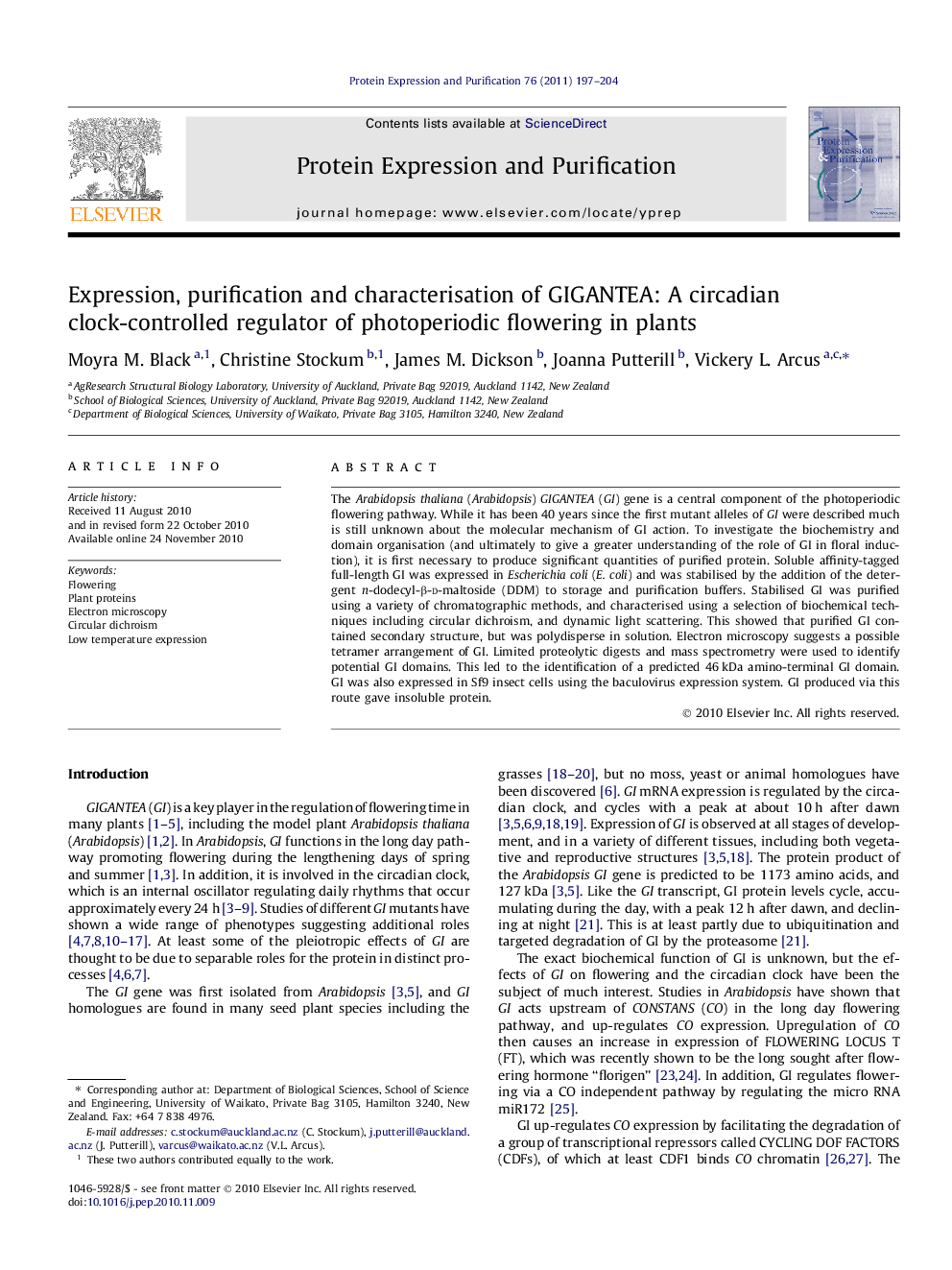| Article ID | Journal | Published Year | Pages | File Type |
|---|---|---|---|---|
| 10843357 | Protein Expression and Purification | 2011 | 8 Pages |
Abstract
The Arabidopsis thaliana (Arabidopsis) GIGANTEA (GI) gene is a central component of the photoperiodic flowering pathway. While it has been 40 years since the first mutant alleles of GI were described much is still unknown about the molecular mechanism of GI action. To investigate the biochemistry and domain organisation (and ultimately to give a greater understanding of the role of GI in floral induction), it is first necessary to produce significant quantities of purified protein. Soluble affinity-tagged full-length GI was expressed in Escherichia coli (E. coli) and was stabilised by the addition of the detergent n-dodecyl-β-d-maltoside (DDM) to storage and purification buffers. Stabilised GI was purified using a variety of chromatographic methods, and characterised using a selection of biochemical techniques including circular dichroism, and dynamic light scattering. This showed that purified GI contained secondary structure, but was polydisperse in solution. Electron microscopy suggests a possible tetramer arrangement of GI. Limited proteolytic digests and mass spectrometry were used to identify potential GI domains. This led to the identification of a predicted 46 kDa amino-terminal GI domain. GI was also expressed in Sf9 insect cells using the baculovirus expression system. GI produced via this route gave insoluble protein.
Related Topics
Life Sciences
Biochemistry, Genetics and Molecular Biology
Biochemistry
Authors
Moyra M. Black, Christine Stockum, James M. Dickson, Joanna Putterill, Vickery L. Arcus,
